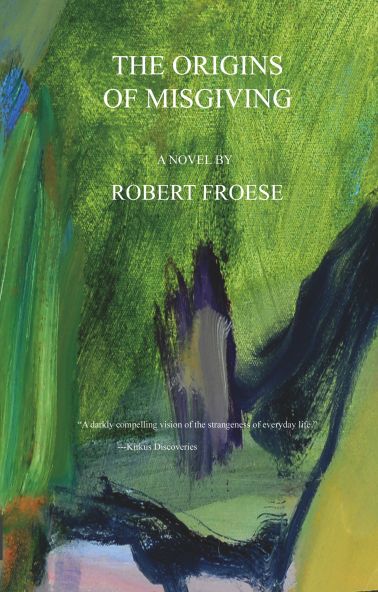The Origins of Misgiving

Comfortable in the gated community of Brandewoode, Michael couldn't ask for a better life. He works at computer security an easy commute away, golfs with his coworkers on weekends. He's head-over-heels in love with his wife, Brenda. Lately, though, his world has been assuming oddly sinister shapes. For weeks now a fog has blotted out the sky, bringing with it a thick, incessant drizzle. Brenda seems detached. Changes at the office arouse his suspicions. Neighbors, one-by-one, fall victim to a mysterious illness. A phantomlike menace stalking Brandewoode has taken to raiding Michael's garbage. And where are all those snakes coming from?
At the edge of the meadow we see the snake . . . moving the way a snake does, choosing its path slowly, insinuating itself among stalks of timothy, plantain, fireweed. Goldenrod, harebell, wool grass. Perfectly ordinary weeds. The air is still. With the snake's passing, the flowering tops and boles of the weeds quiver.
What is it about a snake that so inspires human ambivalence? We admire its disinterest and its silent grace at the same time we are nagged by suspicions of guile and stealth. There is all that lore to worry about: instantaneous death by venom, slow death by strangulation, the vulnerability of orifices. In the case of this particular animal, such fears might easily be magnified by the fact of its length---well over six feet. The presence of such an unlikely reptile in this largely suburban zone at the edge of forest inevitably raises questions, but they are not what interests us at the moment. We are watching the snake as it threads its way along the edge of the meadow, sloughing off speculation like old skin. It may be a matter of minutes. Or longer still. What is time to a snake? This one is obviously not in a hurry. And neither are we.
The snake appears to move deliberately. It wends this way and that way among the weeds and then pauses, wends and then pauses again. The effect is mezmerizing. Advancing somehow in its own track, the snake seems actually to be motion, rather than in motion. The reptile's scales are keeled, its skin colored according to a lopsided geometry. On a green background, darker lozenges repeat along its length. A bright stripe marks the spine. The snake, observed as it passes, is continually the same and continually different, recurring and flowing like a runnel of paint. We imagine that we hear it, but we don't.
Now, without warning, the snake spills forward. Now, without warning, it pauses. Its head turns, homing in our direction. Its tongue flicks out, testing.
The American dream shades into nightmare in this haunting fantasia. Michael Benson seems to have it all: a fine house in the gated exurban community of Brandewoode, ringed by meadow and forest; a rich, beautiful wife, Brenda; and an interesting job as a computer security consultant. But small disruptions gradually undermine his confidence in his world. At work, he plays cat-and-mouse with a hacker who leaves taunting messages for him in pillaged databases, while an ominous strategic planning initiative roils his company. At home, his trash cans suffer violent maraudings. His relationship with Brenda grows friendlier but more distant. But what troubles him most is an almost-imperceptible shift in the way things feel and look, a subtle unreality he perceives in familiar surroundings the Chiaroscuro vegetation, a porch door that fits so tightly against its frame, it looks not like an actual entrance but like a painting of one. Further anomalies surreptitious incursions into his house, Brenda's mysterious absences, an unexplained police lockdown of the neighborhood, a plague of snakes heighten Michael's unease, while a strange girl who lives in the woods seems to offer a refuge from an increasingly sinister Brandewoode. Froese (The Hour of Blue, 1990, etc.) builds up a layered sense of tension and dread, leavened with a touch of magical realism - the sort of thing Kafka might have come up with had he written about affluent IT professionals. His limpid prose, with its painterly feel for atmosphere, marvelously evokes a semirural landscape that's gorgeous, tranquil and yet full of inchoate menace, the land rolling away in all directions like an ocean whose violence is, for the moment, frozen. Simultaneously familiar and eerie, soothing and disorienting, Michael's world is a placid facade covering an unsettling fairy tale. A darkly compelling vision of the strangeness of everyday life.
---Kirkus Discoveries